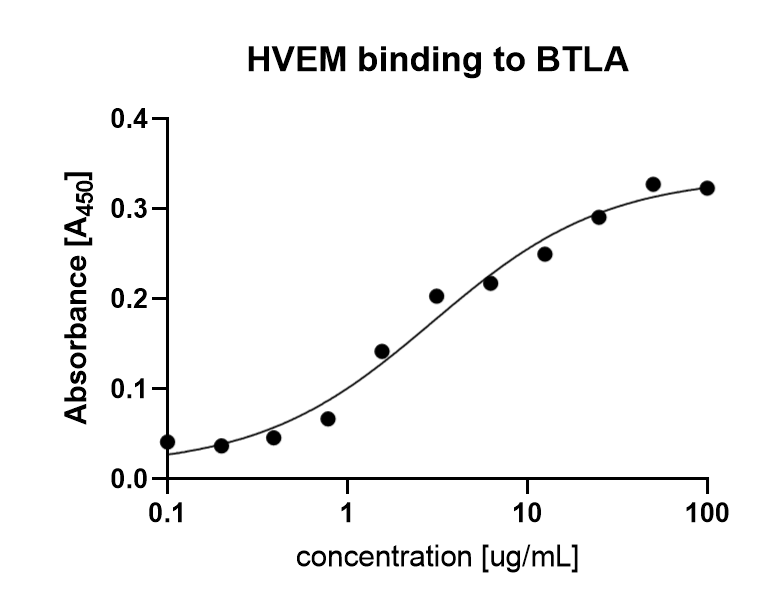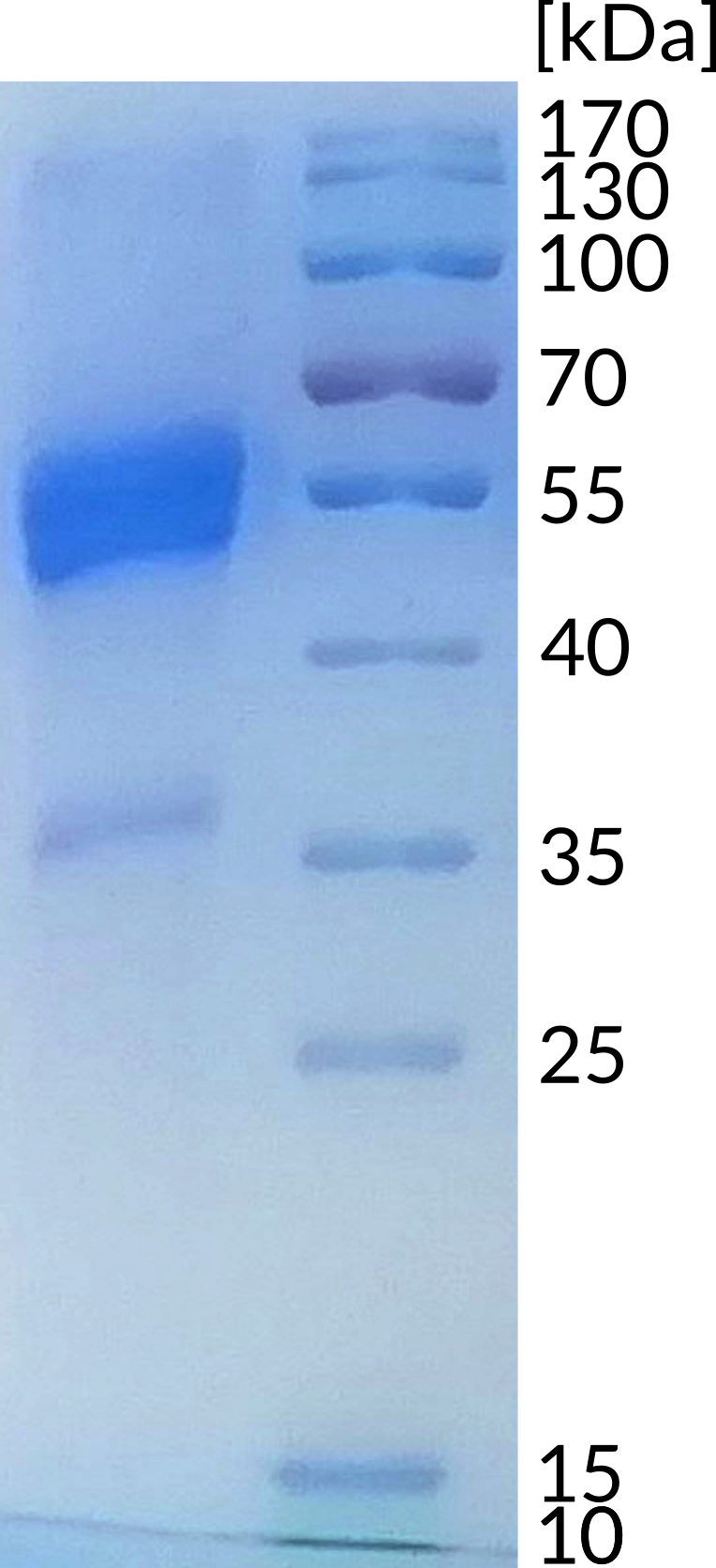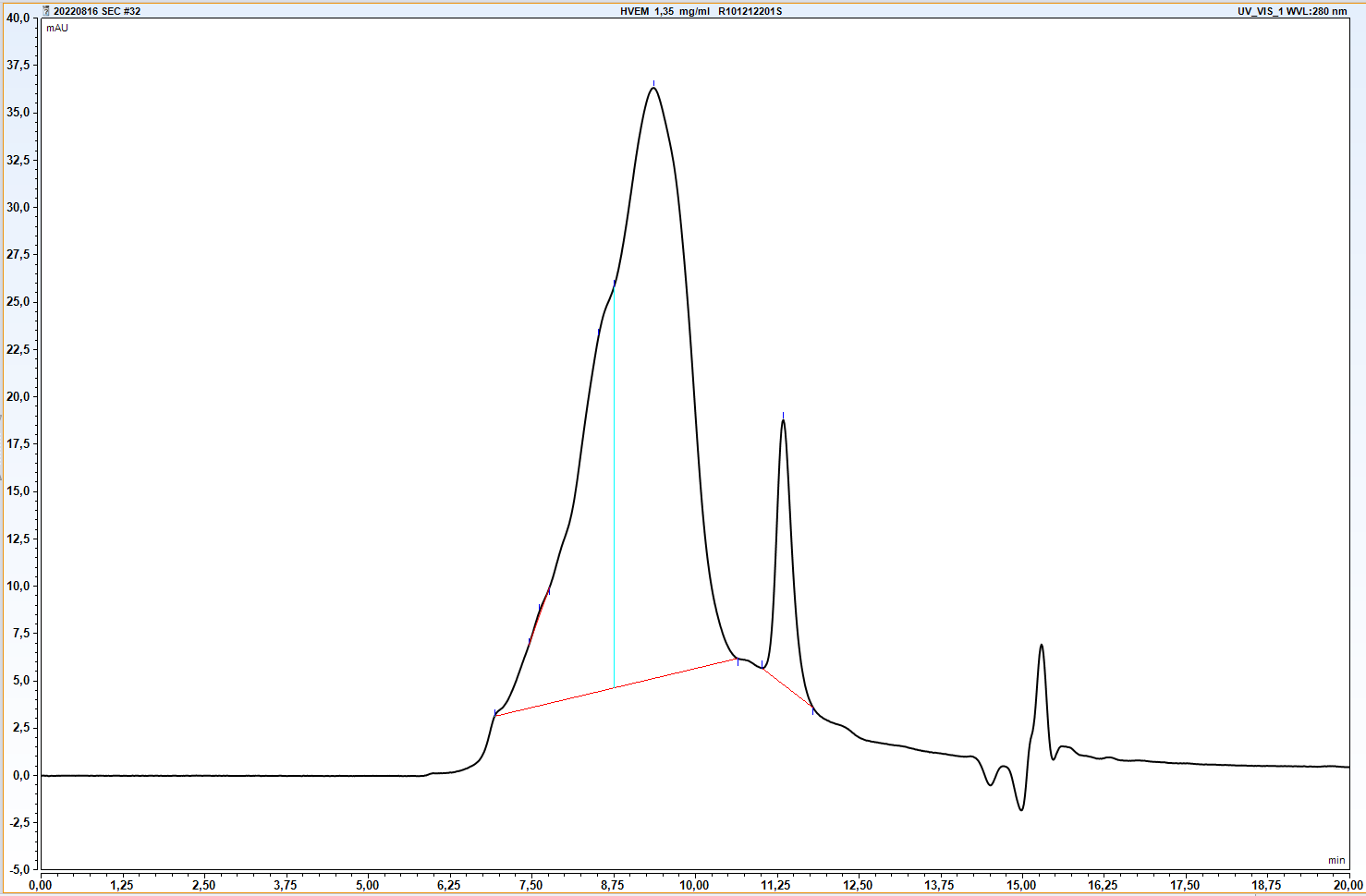| Alternative names | TNFRSF14, HVEA |
| Known ligands | BTLA, CD160, LIGHT |
| Origin | Homo sapiens |
| Accession number | Q92956 |




Herpes virus entry mediator A (Tumor necrosis factor receptor superfamily member 14) is a 245 aminoacid immunomodulatory protein, which comprises of three cysteine-rich domains (CRD). CRDs mediate binding of ligands, analogously to other members of TNFR family (1). It is capable of inducing stimulation as well as inhibition of T-cells, depending on the ligand bound. Ligands capable of binding HVEM include BTLA and CD160 (which induce coinhibitory signal) as well as LIGHT and LTα (which induce costimulatory signal) (2). CRD1 of HVEM is responsible for binding BTLA and CD160 and therefore for delivering the coinhibitory signal (3). As a result, the CRD1 might be an attractive target for development of novel therapeutic compounds for cancer therapy, based on the principle of immune checkpoint blockade. Cheung et al. reports that CD160 and BTLA are also capable of delivering costimulatory signal through biding with HVEM, provieded it is trans interaction (4). HVEM is expressed on both, T cells and APCs, with the highest expression in lung, liver and kidney (5).
- Murphy, K. M., Nelson, C. A., & Šedý, J. R. (2006). Balancing co-stimulation and inhibition with BTLA and HVEM. Nature Reviews Immunology, 6(9), 671-681.
- Cai, G., & Freeman, G. J. (2009). The CD160, BTLA, LIGHT/HVEM pathway: a bidirectional switch regulating T‐cell activation. Immunological reviews, 229(1), 244-258.
- Sedy, J. R., Gavrieli, M., Potter, K. G., Hurchla, M. A., Lindsley, R. C., Hildner, K., … & Murphy, K. M. (2005). B and T lymphocyte attenuator regulates T cell activation through interaction with herpesvirus entry mediator. Nature immunology, 6(1), 90-98.
- Cheung, T. C., Oborne, L. M., Steinberg, M. W., Macauley, M. G., Fukuyama, S., Sanjo, H., … & Ware, C. F. (2009). T cell intrinsic heterodimeric complexes between HVEM and BTLA determine receptivity to the surrounding microenvironment. The Journal of Immunology, 183(11), 7286-7296.
- Montgomery, R. I., Warner, M. S., Lum, B. J., & Spear, P. G. (1996). Herpes simplex virus-1 entry into cells mediated by a novel member of the TNF/NGF receptor family. Cell, 87(3), 427-436.
